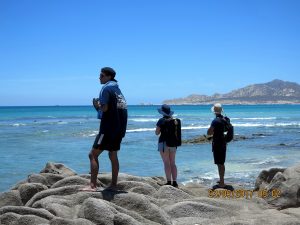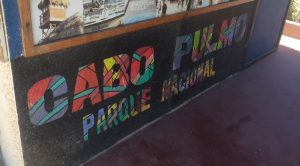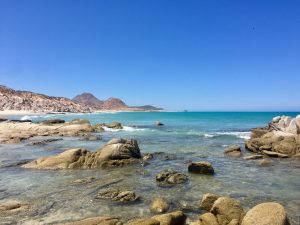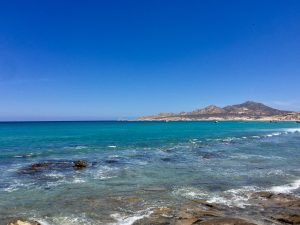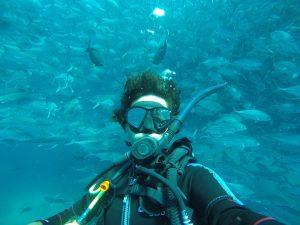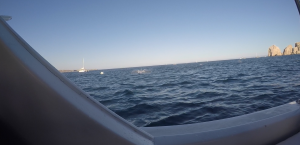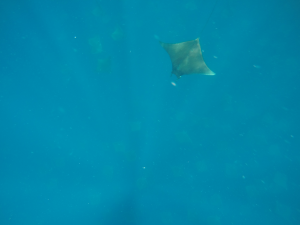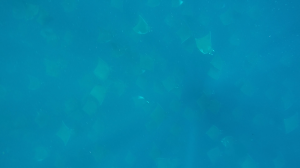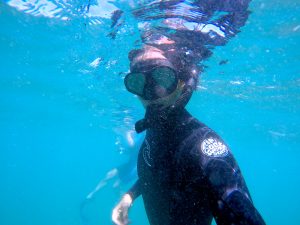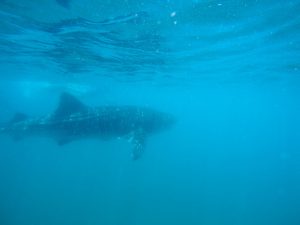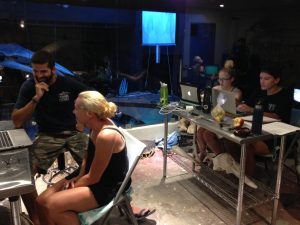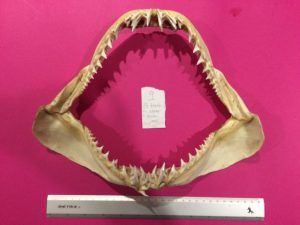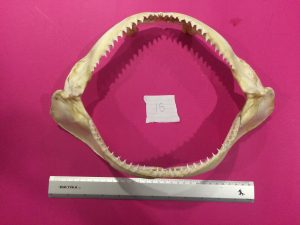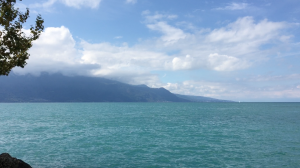The last part of the monitoring program was monitoring bull sharks (Carcharhinus leucas) in Cabo Pulmo National Park. This was very exciting for me due to the fact that Cabo Pulmo’s success as a Marine Protected National Park goes hand in hand with very strict diving regulations. So I was very excited for the opportunity to dive in this place. We learned that Cabo Pulmo is a IUCN category II (National Park) so it’s protected for the ecosystem services it provides as well as for recreation. It is the oldest of three coral reefs in the west coast of North America, and it’s recovered 400% total biomass, so it’s one of the best examples in the world regarding conservation and citizen engagement from the local communities. It was heavily fished because there were very big game fish and it was poorly managed. As time went by, the population of top predators like sharks and marlin began to decline. Today, Cabo Pulmo is the only well-enforced no-take zone in the gulf. This is truly an amazing example of what happens when communities put pressure on the government to create protected areas. There had been two proposed resort developments, both of which have been shut down. We were going to stay in a bungalow over night because we had two days on the itinerary: on the first day we were going to perform a beach patrol and see if we managed to spot any sharks from shore, the second day involved three dives with the team. The data collected from the beach patrol would help a partner NGO (Pelagios Kakunjá) for the research they do in the area. In order to identify them from the shore, and during the dives, we learned a few things regarding shark morphology that we had to keep in mind when performing the searches. Bull sharks (Carcharhinus leucas) have blunt rounded snouts, and they have a large, stocky shape, they have a large, triangular first dorsal fin, and dark ventral flip tips. Lemon sharks (Negaprion brevirostris) have a yellow to olive colour. The most particular thing we looked at, specially from shore, is that their first and second dorsal fins equal in size and shape. Black tip sharks (Carcharhinus limbatus) have black tip fins, and a white anal fin. They are medium sized stocky sharks and have a long pointy snout. Tiger sharks (Galeocerdo cuvier) are very recognizable due to the pattern of stripes and dots that runs down their backs. Their teeth are very distinct, they have a deep notch, are heavily serrated, and the lower and upper teeth are similar. White tip reef sharks (Triaenodon obesus) are smaller in size and they are slender. Their eyes are horizontally oval, and have a down-slanted mouth that almost makes them appear grumpy. The white tips appear on the 1st dorsal and caudal fins. They have tricuspid teeth. Nurse sharks (Ginlgymostoma cirratum) are usually found at the bottom, they have tiny eyes, and they have nasal barbels. They have rounded fins, and their caudal fin has no lower caudal lobe for better navigation (With them being bottom dwellers, a lower lobe would keep making resistance with the sand). We spotted three juvenile lemon sharks during our beach patrols. On the second day we managed to see a beautifully large pregnant female. I was in complete awe being in the presence of that animal but you could see she was scared of us in her evasive manner. I consider myself very lucky to have been able to see her even for a couple of seconds. Other than that encounter, we didn’t manage to see any other sharks. However, we managed to swim with a gigantic school of jacks.
